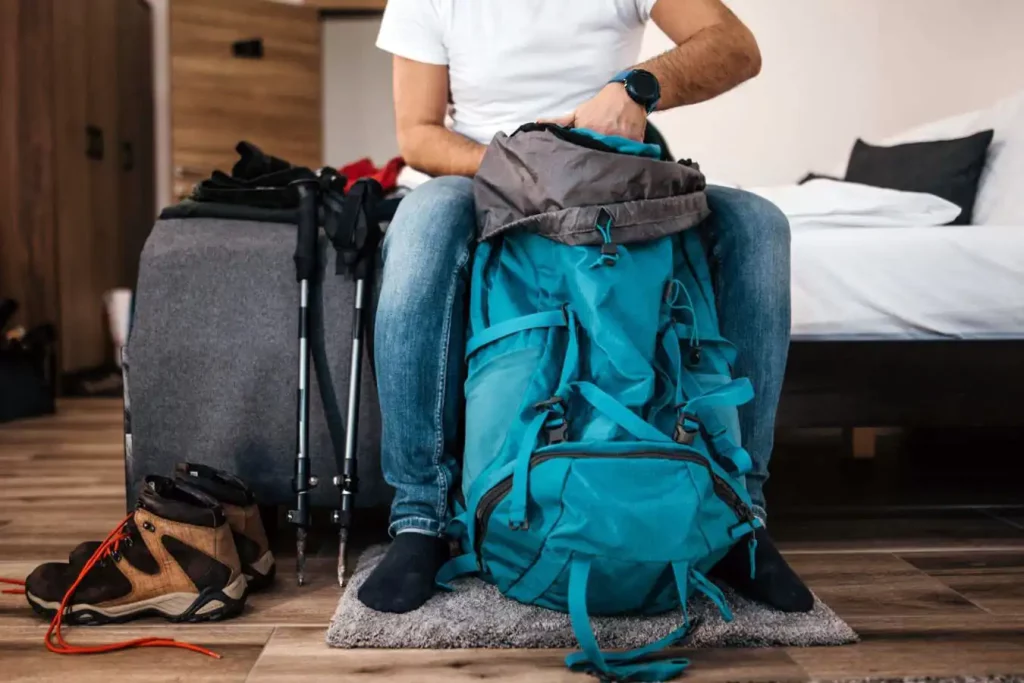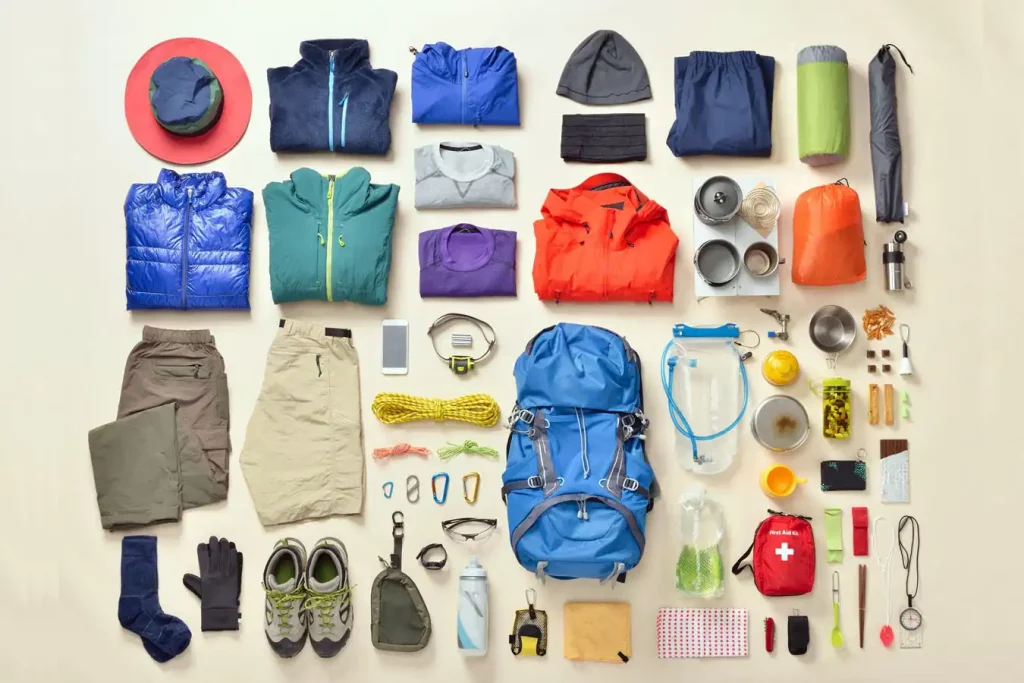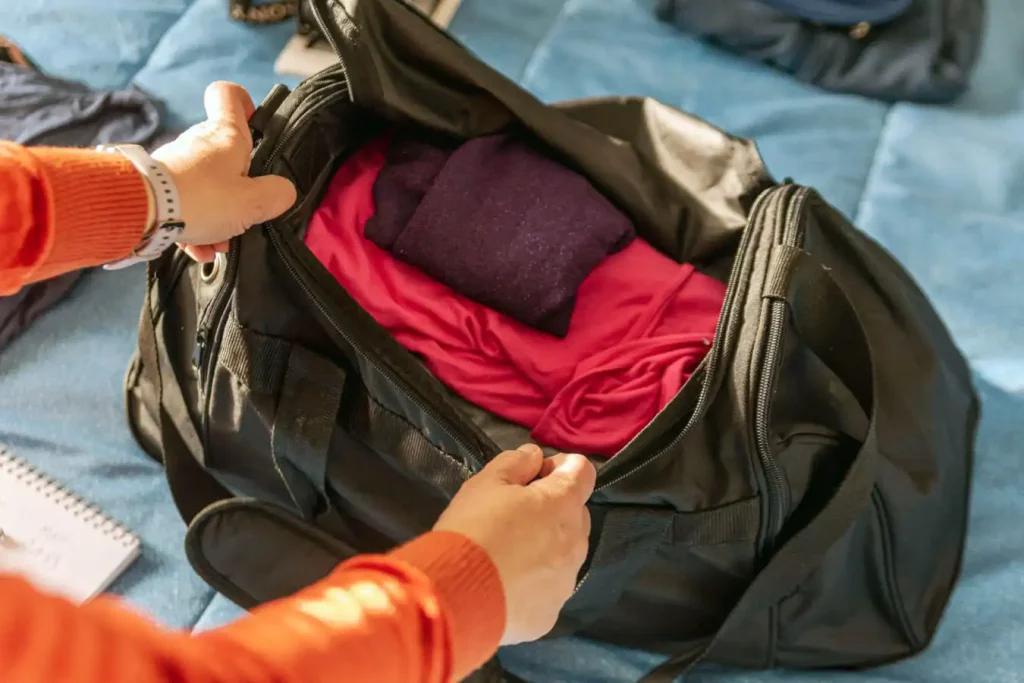Wondering how to pack a backpack with clothes for your next outdoor adventure?
You've landed on the right page!
We'll take you step by step through the process, offering expert tips to help you maximize space and keep your attire wrinkle-free.
Whether you're a novice traveler or a seasoned globe-trotter, we guarantee these tips will revolutionize your packing routine.
Get ready to embark on your journey with less stress and more style! Let's dive right in.
Understanding Your Backpack
Before you begin the process of packing, understanding your backpack is essential. The backpack is more than just a container; it's an essential tool that, when utilized correctly, makes your travel experience smoother and more comfortable.

Choosing the Right Backpack for Your Needs
Choosing the right backpack is pivotal and should not be an impulsive decision. First and foremost, consider the size and capacity of the bag. Will you be packing for a weekend trip or a month-long expedition? Knowing the length of your trip and the volume of gear you need to carry will help determine the appropriate backpack size.
Size and Capacity
Size matters, especially when it comes to backpacks. For a weekend trip, a 30-50 liter backpack should suffice. However, if you plan to venture out for a week or more, you might need a pack ranging from 50 to 80 liters. Remember, it's not just about packing clothes. Consider the space needed for food, water, and other essential gear.
Material and Durability
Material and durability are also essential factors. Is your trip in a region prone to rain or rough weather? Then, you should opt for a backpack made from water-resistant materials. Likewise, if your journey involves tough terrains or long trails, ensure your backpack is durable enough to withstand the trip without tears or damage.
Compartments and Accessibility
Compartments are key for organization and accessibility. Backpacks with multiple compartments allow you to distribute your gear efficiently, providing easy access to the items you need frequently. A well-designed backpack should have a blend of larger compartments for bulkier items, and smaller pockets for smaller necessities.
Read more: How Much Does It Cost to Backpack Europe
Familiarizing Yourself with Your Backpack's Features
Every backpack comes with a unique set of features. Recognizing and utilizing these features can significantly enhance your packing efficiency and overall travel experience.
Main Compartment
The main compartment is where most of your clothes and bulky items will go. It’s essential to understand how to strategically place these items for optimal comfort and weight distribution. As a rule of thumb, your heaviest items should be positioned close to your back and centered in the backpack.
Secondary Pockets
Secondary pockets are perfect for storing smaller items that you want to access quickly and frequently. These can include your snacks, map, phone, and other essentials. Using these pockets effectively prevents you from having to dig through the main compartment every time you need something.
That's a start! Understanding your backpack and its features lays the groundwork for an effective packing strategy. Stay tuned for more insights on packing techniques and tips.
Read more: How to Fix a Backpack Strap
Preparing Your Clothes for Packing
Preparing your clothes properly is vital to maintaining a neat and organized backpack. Not only does this make it easier to find your items when needed, but it also ensures that your clothes remain fresh and wrinkle-free throughout your journey.
Choosing the Right Clothes
The first step in this process involves selecting the right clothes. This choice should be guided by several factors, including the weather of your destination, the activities you plan to engage in, and the duration of your trip.
Factors to Consider
When considering weather, it's crucial to plan for the worst-case scenario. If you're going to a location known for sudden weather shifts, pack clothes that can keep you warm and dry. Additionally, if your activities involve strenuous physical exertion, such as hiking or cycling, consider clothes that offer both comfort and mobility.
Lastly, the duration of your trip will determine the quantity of clothes you need. For extended trips, consider options for washing and re-wearing some items.
Folding Versus Rolling Clothes: Pros and Cons
The debate between folding and rolling clothes has been ongoing among travelers for years. Folding clothes is a traditional method that can help keep your clothes wrinkle-free, but it often consumes more space. Rolling clothes, on the other hand, is an excellent space-saving technique, but it may lead to wrinkles on some fabrics.
Experiment with both methods and choose the one that works best for you, keeping in mind the type of clothes you're packing. For instance, roll more casual clothes like t-shirts and undergarments, and fold formal clothes that are prone to wrinkles.
Organizing Your Clothes
Once you have decided on folding or rolling, the next step is to organize your clothes effectively.
Sorting Clothes by Type
Start by sorting your clothes into categories. This could mean separating your socks and underwear, shirts, pants, and outerwear. Grouping these items together not only makes packing easier but also helps you locate items quickly once you're on the move.
Grouping Clothes by Use
Another useful organization strategy involves grouping clothes based on their intended use. For instance, you can keep all your hiking clothes in one section and your casual sightseeing attire in another. This method can be particularly helpful when you have specific outfits planned for different activities.
Packing Your Backpack Step-by-Step
With your clothes prepared and organized, you can now start the actual packing process. This part is where your understanding of your backpack's features and your organizational efforts really pay off.
Laying Out Your Items
Before packing anything, lay out all your clothes and items in front of you. This way, you can see everything you have, making it easier to plan out where each item should go.
Starting with the Bottom of the Backpack
The bottom of your backpack is the ideal space for heavier and less frequently used items.
Packing Heavier and Less Frequently Used Clothes
Items like jeans, jackets, or an extra pair of shoes, which you won't need until you arrive at your destination, should go at the bottom. It's also a great place to store your sleeping bag or other similar items if your trip involves camping.
Filling Up the Middle of the Backpack
The middle of your backpack should hold everyday clothes and essential items.
Packing Everyday Clothes and Essential Items
Everyday clothes include your t-shirts, underwear, socks, and other items that you'll need frequent access to. It's also wise to pack your toiletries and first-aid kit in the middle, where they can be quickly reached if needed.

Know more: What to Wear When Camping in Hot Weather
Utilizing the Top of the Backpack
The top section of your backpack is easily accessible, which makes it the ideal place for items you'll need to access regularly.
Packing Light and Frequently Used Items
Items like a rain jacket, hat, gloves, or even snacks should find their place at the top of your backpack. Anything you think you might need while on the go without having to dig through your entire bag is a candidate for this space.
Using Side and Front Pockets Effectively
External pockets can be a real game-changer when it comes to organization. Not only do they allow for quick access to essentials, but they can also help distribute weight more evenly across your pack.
Storing Small or Flat Items
The side and front pockets are perfect for small or flat items. Maps, guidebooks, chargers, or even a book for your journey can find their place here. Remember, the idea is to have quick access to these items without having to open the main compartment.
Keeping Essential Items Accessible
Also, don't forget to use these pockets for items like your water bottle, sunscreen, sunglasses, or insect repellent. These items are essential, and having them within reach can make your journey a lot more comfortable.
Overall, to pack a backpack with clothes, organize and fold or roll your items, place heavy and less frequently used clothes at the bottom, everyday essentials in the middle, & frequently used and light items at the top.
To know more: How to Organize a Backpack for Travel
Additional Effectives Tips and Tricks
Now that we've covered the basics let's dive into some additional tips and tricks that can elevate your packing skills.
Making Use of Packing Cubes
Packing cubes are a traveler’s best friend. They not only help keep your clothes organized and separate but also make packing and unpacking a breeze. You can dedicate each cube to a different category of clothing or different days of your trip.
Maximizing Space with Vacuum Bags
If you're going on a longer journey and need to pack a substantial amount of clothing, vacuum bags can be a lifesaver. They can help compress your clothes, freeing up more space in your backpack. However, keep in mind that they can also make your bag heavier.
Handling Wrinkle-Prone Clothes
For those wrinkle-prone items, consider using garment folders or packing them in a dry-cleaning bag. The slippery surface can reduce friction and help prevent wrinkles.
Maintaining Balance in Your Backpack
Remember, a well-packed backpack is a balanced backpack. Make sure you distribute the weight evenly on both sides to avoid strain and maintain balance during your travels.
Read next: How To Pack A Backpack For Air Travel
FAQs About Pack a Backpack with Clothes
Is it better to roll or fold clothes in a backpack?
How do you pack a bag with clothes?
What is the best way to pack a backpack for travel?
How do you pack 4 days of clothes in a backpack?
Final Thoughts
Packing a backpack with clothes may seem like a daunting task at first, but with the right techniques and tips, it becomes quite straightforward.
To recap, begin by understanding your backpack's features, prepare and organize your clothes, then start packing from the bottom up. Keep heavy items at the base, everyday items in the middle, and frequently used items at the top. Utilize external pockets for small, flat, or essential items and consider using packing tools like packing cubes or vacuum bags for extra efficiency.
With these tips in mind, you're well on your way to becoming an expert at packing your backpack! Safe travels and enjoy your adventure.
Read next: How to Get a Backpack Zipper Unstuck


